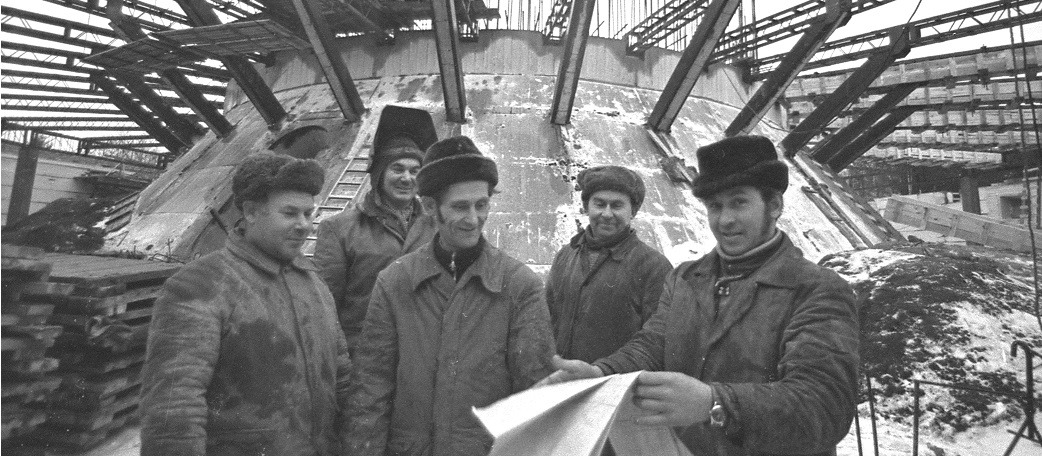TV Tower history exhibition
At the centre of watershed events! Tallinn TV Tower has great historical significance.
Already when you walk through the entrance area, you’ll see fragments from the history of the TV Tower on a larger-than-life photo wall. In 1975-1980, the new TV Tower climbed skyward through difficulties. In addition to a suitable location, the designers also had to decide on the structural design. A free-standing reinforced concrete base with a steel antenna was selected, total height 314 metres. The reinforced concrete TV Tower’s insides housed all of the transmission equipment. It also allowed the construction of a viewing deck with restaurant, accessible by high-speed lift. The height of the tower made it possible to broadcast high-quality radio and TV programming within a radius of 90 km.

A number of technological solutions that were new at the time were used. For instance, the sliding mould method was used to assemble the reinforced concrete “trunk.” The mould was installed at a height of 2,5m, the reinforcing rods were assembled and the concrete was poured in. The concrete mould was then moved higher, the aperture was decreased to the desired diameter and the concrete work on the next section began. Even now, the concrete rings can be seen on the trunk every 2.5 m. The concrete work lasted 8 months without stoppage and the trunk rose metre by metre toward the top.
Weighing over 120 tonnes, the metal latticework of the upper shell was assembled around the trunk of the tower at ground level and lifted up to 170 metre height.
In 1974 Moscow was selected as the host city for the 1980 Summer Olympics and Tallinn was to be the site of the Olympic sailing events. The TV Tower was included on the list of official Olympic sites and that opened the purse strings of the Soviet empire to the project. To speed up the completion of the tower, equipment originally meant for the Vilnius TV Tower was delivered to Tallinn at the last moment.

20th August 1991 – declaration of restoration of Estonian independence. Just before midnight, the Supreme Council of the Republic of Estonia reached a decision to declare Estonia no longer a part of the USSR and once more an independent nation. Early in the morning of 21st August, Soviet landing troops made an attempt to seize the TV Tower. People from all over Estonia came out to defend the tower. A small detachment of armed Estonian defenders barricaded themselves into the communication room on the 22nd floor where they maintained contact with the rest of the world. Quick thinking saved the day. The defenders blocked the elevator door by wedging a matchbox into the works and the assault troops had to climb up the stairs. Having reached the top, the storm troops threatened to use explosive charges to blast the door open, but the defenders repelled this by activating the fire fighting gas systems. These steps bought valuable time and soon the putsch in Moscow had failed. Unlike Vilnius and Riga, the events in Tallinn passed without loss of life.
Read more:
- TV Tower history and key dates




